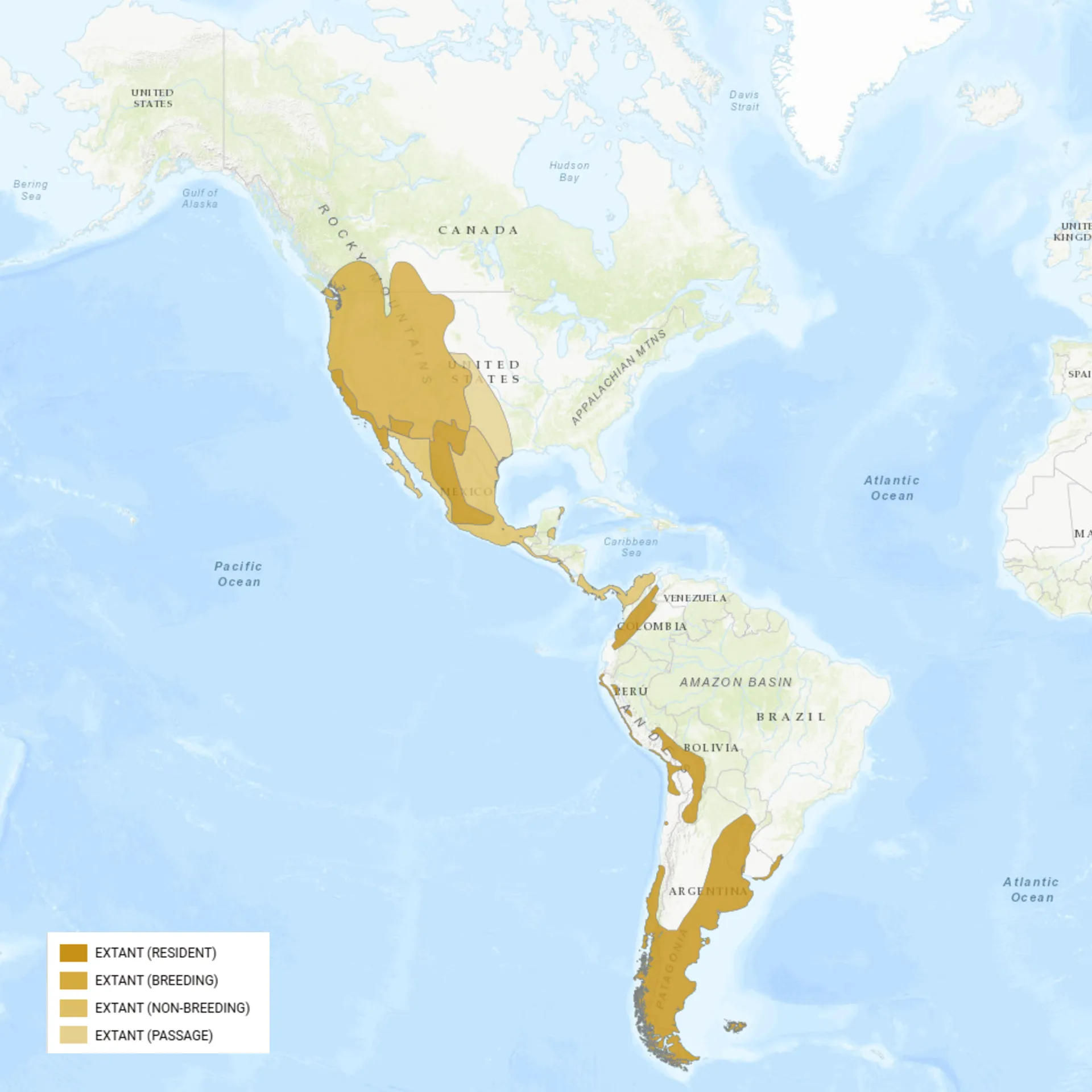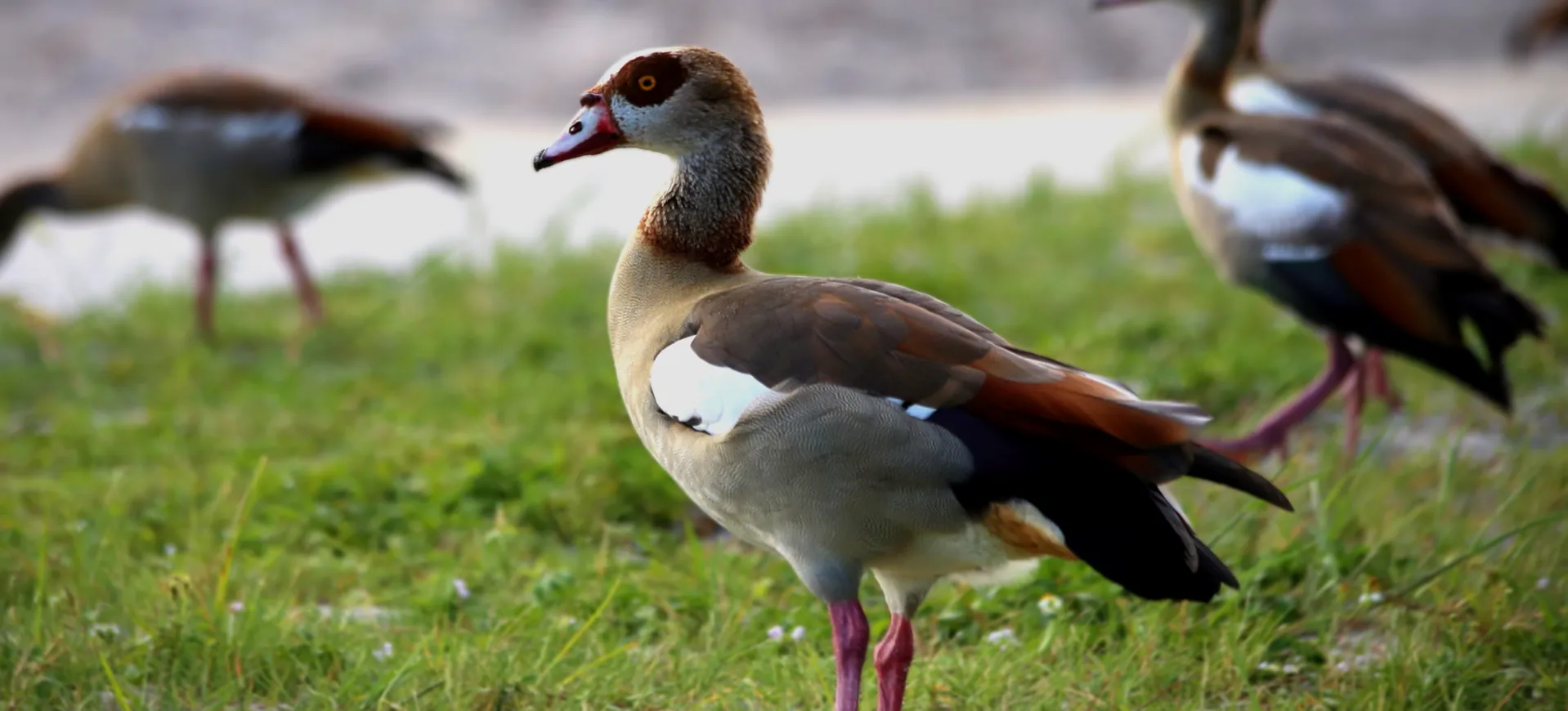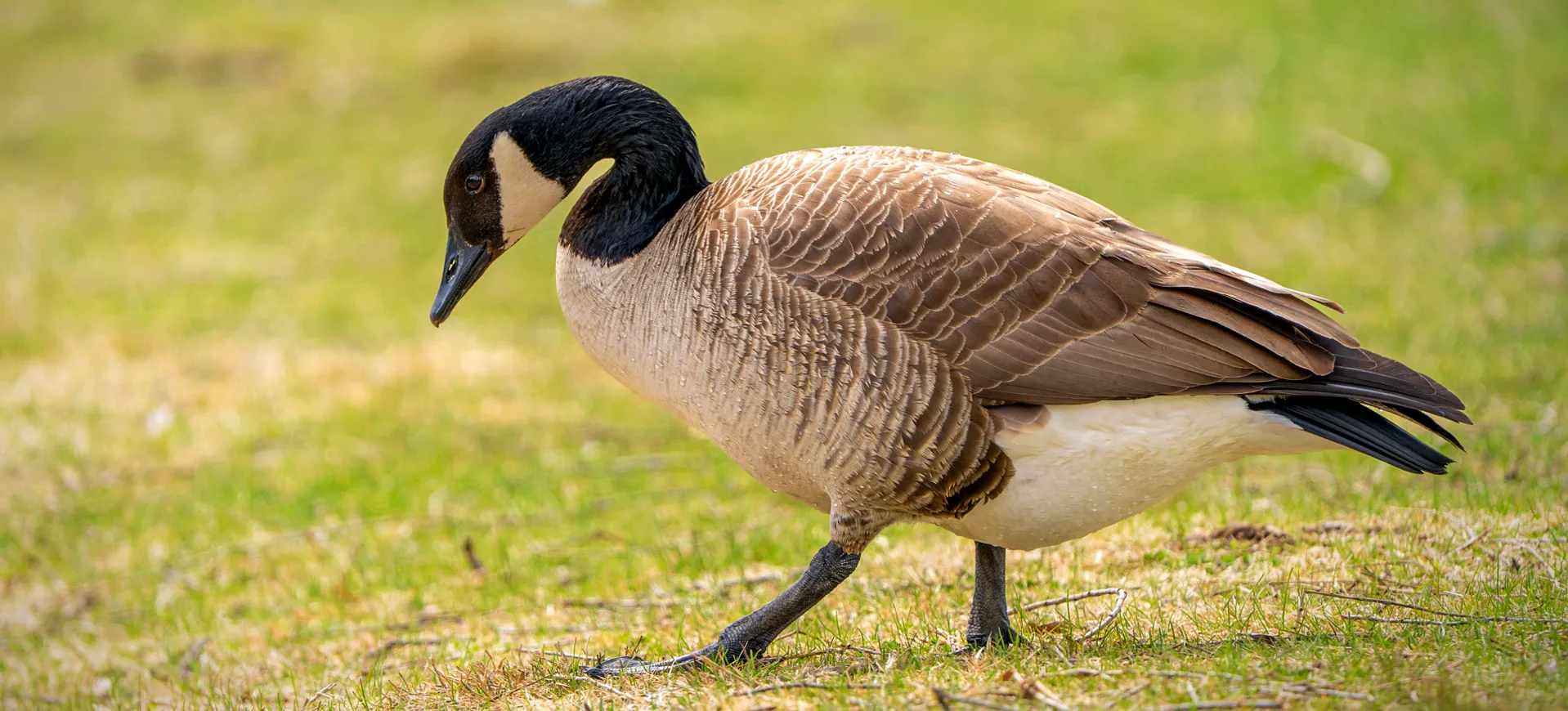Overview
The cinnamon teal (Spatula cyanoptera) is a small dabbling duck known for the striking reddish-brown plumage of breeding males. It is native to the Americas and is primarily found in wetlands, marshes, and shallow lakes across western North and South America. This species is highly migratory, with northern populations traveling to Central and South America for the winter, while some South American populations remain year-round residents. Adapted to various wetland habitats, the cinnamon teal is an important species for maintaining healthy aquatic ecosystems.
Males in breeding plumage display bright cinnamon-red feathers, contrasting with their dark bills and iridescent greenish-blue wing patches. Females and non-breeding males are mottled brown, providing them with effective camouflage in marsh vegetation. Their distinctive long, spatula-shaped bill is adapted for filter-feeding on aquatic vegetation, seeds, and small invertebrates. They are social birds outside the breeding season, often forming mixed flocks with other dabbling duck species.
Cinnamon teals are relatively common, but habitat loss and wetland degradation threaten their populations. They rely on freshwater and brackish marshes for breeding, making them sensitive to water availability and quality changes. Conservation efforts focus on protecting wetland habitats, particularly along migration routes and wintering grounds. Although they are hunted in some areas, regulated hunting and conservation initiatives help maintain stable populations.
Taxonomy
Kingdom
Phylum
Class
Order
Family
Genus
Species
Type
Current distribution:
Cinnamon teals are widely distributed across the Americas, with breeding populations concentrated in the western United States, Mexico, and South America. In North America, they nest from the western U.S. and southwestern Canada down into Mexico, with wintering grounds extending into Central America and northern South America. South American populations are found in Argentina, Chile, Peru, and Bolivia, with some remaining as year-round residents in suitable habitats. Their migration patterns vary, with some populations traveling thousands of miles between breeding and wintering grounds.
Although common, local populations fluctuate depending on wetland availability and environmental conditions. Loss of wetland habitats due to agriculture, urban expansion, and climate change poses a long-term risk to their numbers. Conservation programs focus on wetland restoration and protection to ensure stable breeding and wintering habitats. Despite these threats, cinnamon teals remain relatively stable, benefiting from conservation efforts across their range.
Physical Description:
The male cinnamon teal in breeding plumage has deep reddish-cinnamon body feathers, a dark brown head, and bright red eyes. Its wings display a distinct iridescent green speculum bordered by pale blue and white, visible in flight. The female is mottled brown with a slightly paler face and a dark eye stripe, making her more cryptic and well-camouflaged in wetland vegetation. Both sexes have long, dark, spatula-shaped bills, which are well-adapted for filter-feeding in shallow waters.
This species has a compact body, relatively short legs, and webbed feet suited for swimming and dabbling. Its tail is short and pointed, while its wings are rounded, allowing for agile flight during migration and predator evasion. Juveniles resemble females in appearance but may have a slightly duller coloration and a more subtle eye stripe. Non-breeding males undergo a seasonal molt, temporarily adopting a plumage similar to the female before regaining their vibrant cinnamon color.

Lifespan: Wild: ~12 Years || Captivity: ~20 Years

Weight: Male: 14–17.6 oz (400–500 g) || Female: 10.6–14 oz (300–400 g)

Length: Male: 14–17 in (36–43 cm) || Female: 13–16 in (33–41 cm)

Height: Male: 12–16 in (30–41 cm) || Female: 11–14 in (28–36 cm)

Wingspan: Male & Female: 22–26 in (56–66 cm)

Top Speed: 50 mph (80 km/h)
Characteristic:
Native Habitat:
Cinnamon teals inhabit various wetland ecosystems, including freshwater marshes, shallow lakes, slow-moving rivers, and coastal lagoons. They prefer areas with abundant emergent vegetation, providing nesting cover and food resources. During the breeding season, they select shallow wetlands with dense reeds and grasses, where they construct concealed nests close to the water. These ducks are highly adaptable, sometimes using artificial wetlands, reservoirs, and agricultural fields as alternative habitats.
In winter, migratory populations move to warmer climates, occupying coastal estuaries, mangroves, and inland freshwater habitats. Most commonly found at low to moderate elevations, some South American populations breed at higher altitudes in Andean wetlands. Habitat quality is key to their breeding success, as they rely on stable water levels to protect their nests. Human-induced wetland destruction and water pollution can significantly impact local populations.
Biomes:
WWF Biomes:
Biogeographical Realms:
Continents:
Diet:
Diet & Feeding Habits:
Cinnamon teals are omnivorous dabbling ducks that feed on aquatic vegetation, seeds, and small invertebrates. They use their specialized, filter-like bill to strain food from the water’s surface and shallow mud. Their diet shifts seasonally, with plant material such as seeds and pondweed dominating in fall and winter, while insects, mollusks, and crustaceans become more important in the breeding season. Their feeding behavior is most active in the early morning and late evening, helping them avoid predators.
They forage in shallow wetlands, often tipping forward to reach submerged vegetation, a behavior typical of dabbling ducks. During migration, they rely on nutrient-rich stopover sites to replenish energy reserves for long-distance travel. They may also feed in flooded fields and rice paddies, where they take advantage of abundant food sources. While they mainly consume plant matter, protein-rich invertebrates provide essential nutrients for breeding and molting.
Mating Behavior:
Mating Description:
Cinnamon teals form monogamous pairs during the breeding season, with males courting females through head bobbing, wing displays, and vocalizations. Once paired, the female selects a nesting site, usually in dense vegetation near water, where she builds a well-hidden nest lined with down feathers. She lays 8–12 eggs, which she incubates for about 21–25 days while the male stays nearby to defend the territory. After hatching, the ducklings are precocial, leaving the nest within a day and following their mother to the water.
The female provides all parental care, leading the ducklings to foraging areas and protecting them from predators. Ducklings feed on small invertebrates and gradually transition to a more plant-based diet as they grow. By 35–45 days, they develop flight feathers and become independent, though some remain in family groups for a short period. After breeding, adults undergo a molt, temporarily losing their flight feathers and becoming more vulnerable to predation.
Reproduction Season:
Birth Type:
Pregnancy Duration:
Female Name:
Male Name:
Baby Name:
Social Structure Description:
Cinnamon Teals are social birds, often forming large flocks outside the breeding season. These flocks can include a mix of species, demonstrating a degree of social tolerance and cooperation in shared habitats. During the breeding season, pairs become more territorial, defending their nesting sites from intruders. The social dynamics of Cinnamon Teals are influenced by the availability of resources, with competition for food and nesting sites shaping their interactions.
The formation of flocks provides safety in numbers from predators and enhances foraging efficiency. The social structure of Cinnamon Teals is flexible, allowing them to adapt to changing environmental conditions and habitat availability. Understanding these social behaviors is important for the management of habitats and the conservation of the species.
Groups:
Conservation Status:
Population Trend:
The Cinnamon Teal is currently listed as Least Concern by the IUCN, indicating a stable population across its wide range. However, local populations may experience fluctuations due to habitat loss, pollution, and climate change. Preserving wetland habitats is crucial for maintaining healthy populations, as these areas provide essential resources for feeding, breeding, and migratory stopovers.
Conservation efforts focus on wetland restoration, pollution control, and the protection of migratory routes to ensure the species’ long-term survival. Community involvement and education about the importance of wetlands also play a key role in conservation. Ongoing research and monitoring are necessary to understand population trends and the impacts of environmental changes on this species.
Population Threats:
The primary threats to the Cinnamon Teal include habitat loss due to agricultural expansion, urban development, and climate change. Wetland degradation, water pollution, and introducing invasive species also pose significant risks to their habitats. Climate change, in particular, threatens to alter the distribution and quality of wetlands, impacting the availability of food and nesting sites.
Conservation measures must address these threats by protecting and restoring wetland habitats, regulating water use, and mitigating the impacts of climate change. Protecting migratory corridors is also essential to ensure that Cinnamon Teals have access to suitable habitats throughout their annual cycles.
Conservation Efforts:
Conservation efforts for the Cinnamon Teal include habitat protection, restoration projects, and creating protected areas and wildlife refuges. Wetland conservation initiatives aim to maintain and improve the quality of freshwater habitats, supporting Cinnamon Teals and a wide range of other species. International cooperation is crucial for the protection of migratory routes and the management of shared water resources.
Education and outreach programs help raise awareness about the importance of wetland conservation and encourage community participation in conservation activities. Research and monitoring programs are essential for tracking population trends, assessing habitat quality, and informing conservation strategies. These efforts collectively contribute to the conservation of the Cinnamon Teal and the preservation of vital wetland ecosystems.
Additional Resources:
Fun Facts
- Cinnamon Teals are among the few duck species where the male defends the nesting territory.
- They have one of the longest migration distances among North American dabbling ducks.
- The Cinnamon Teal’s vibrant plumage makes it one of the most easily identifiable ducks in its range.
- Unlike many other duck species, Cinnamon Teals often return to the same breeding sites year after year.
- They can interbreed with the closely related Blue-winged Teal, producing hybrid offspring.
- Cinnamon Teals have a unique adaptation in their bill structure, allowing them to filter feed in muddy waters.
- Their nests are often hidden in dense vegetation, making them difficult for predators to find.
- Ducklings can swim and feed themselves shortly after hatching, demonstrating their precocial nature.
- Conservation efforts for Cinnamon Teals benefit a wide range of other wetland-dependent species.
- They play a critical role in wetland ecosystems as consumers of aquatic invertebrates and seeds, contributing to the health of these habitats.


















































































